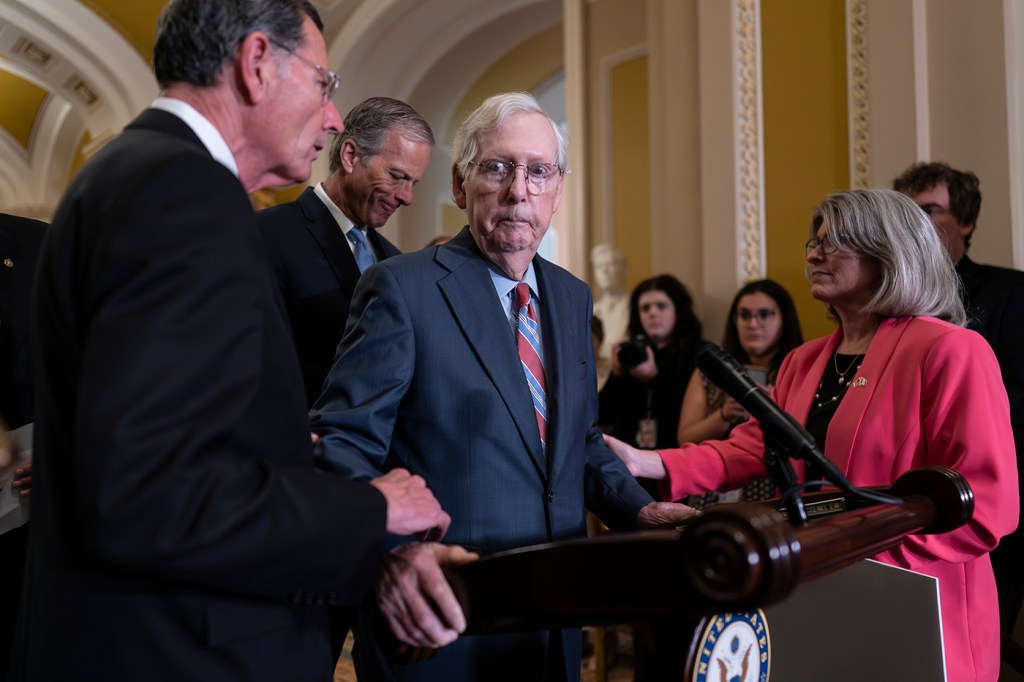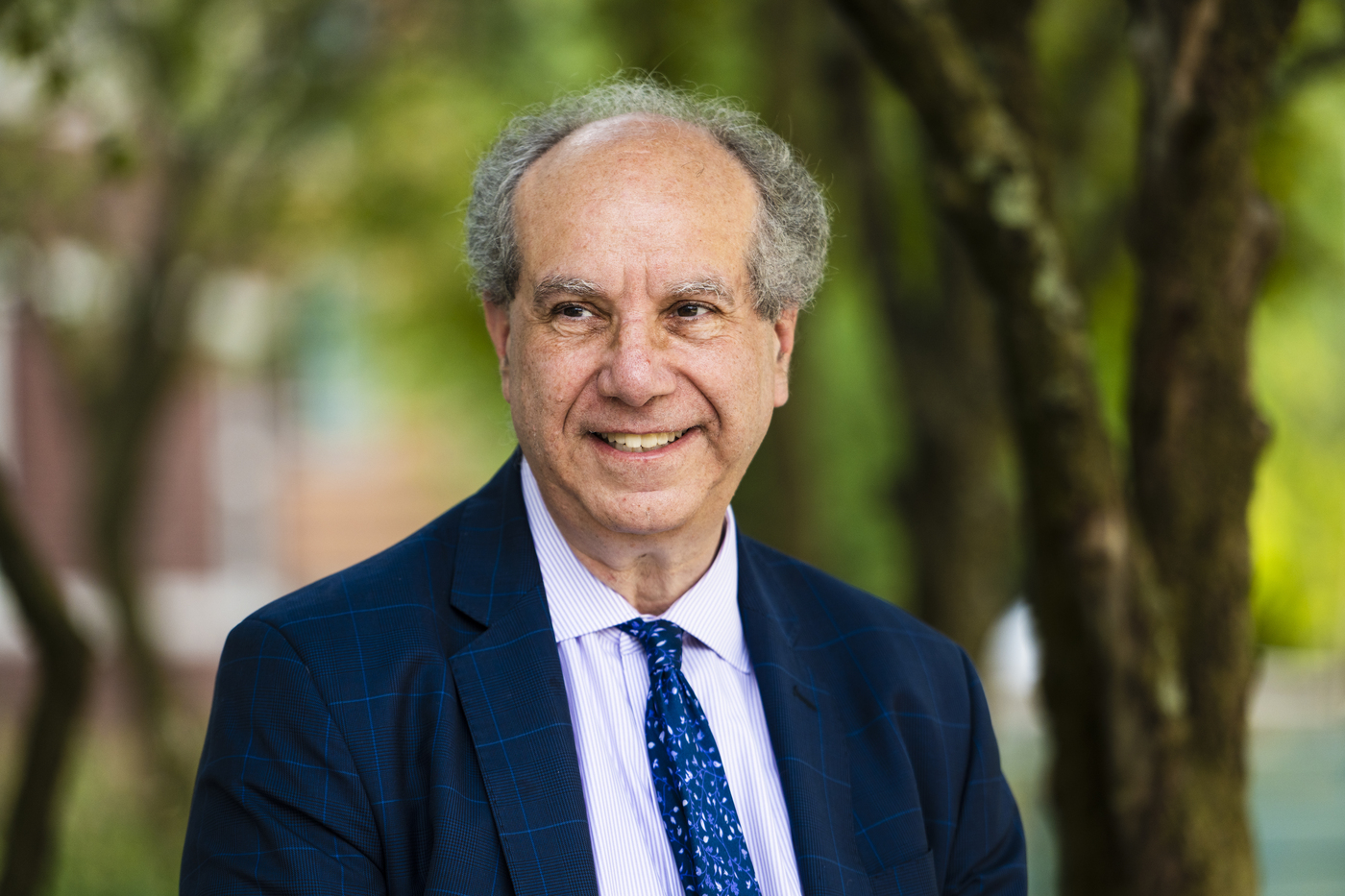Term limits amendment faces extraordinary uphill battle — as it did in the ’90s

After Sen. Mitch McConnell, the longest-serving Republican member of Congress, froze before a gaggle of reporters for the second time in as many months, many prominent people took to social media to trot out an old argument about the need for term limits.
The effort to impose legal limits on how long a person can serve in Congress dates to the 1990s, when Republicans campaigned to curb the Democrats’ four decades of control in the House of Representatives. It’s entered the public consciousness again — only this time, it’s finding cause on both sides.

“For goodness sake, the family, friends, and staff of Senators [Diane] Feinstein and McConnell are doing them and our country a tremendous disservice,” Democratic Rep. Dean Phillips tweeted this week, citing the 90-year-old Feinstein’s recent health problems. “It’s time for term limits for Congress and the Supreme Court, and some basic human decency.”
Northeastern Global News spoke to Jeremy Paul, a professor of law and former dean of the Northeastern University School of Law, about the feasibility (and timing) of the term limits discussion, recent efforts to push for change and the difficulty of achieving it.
1995 Supreme Court case
The issue of whether states could implement limits on the tenure of their respective federal representatives was decided by the Supreme Court in 1995 in U.S. Term Limits, Inc. v. Thornton.
In it, the court ruled that a state constitutional amendment adopted by voters in Arkansas in 1992 that shrined limits for its federally elected representatives violated the U.S. Constitution. The justices argued that the law would have had the likely effect of “handicapping a class of candidates and has the sole purpose of creating additional qualifications indirectly.”
Paul argues that the high court’s decision in U.S. Term Limits Inc. v. Thornton is a good one, and that the court “should not revisit the issue.” He says that term limits would be counterproductive because, as the political system currently exists, cultivating relationships and clout over time is part and parcel to effective legislating.
Yet a recent survey found overwhelming support for term limits — 86% of Republicans, 80% of Democrats and 84% of independents. Proponents of the proposed changes say that the limitations would restore competition and ensure rotation. While there are no term limits on federal lawmakers, more than a dozen states have implemented them in recent years to encourage turnover at the state level.
Rules create ‘career politicians’
Whereas accusations of careerism in congressional politics became a clarion call for former Republican House Speaker Newt Gingrich’s Republican “revolution” in the early 1990s, the notion that U.S. electoral rules create “career politicians” — and that careerism is only solved by enforcing rules that ensure turnover — reads to Paul like an oxymoron.
“We have term limits: they’re called elections,” Paul says. “To the extent that people are not happy that their elected representatives are too old, they can vote them out. If we believe, as some people do, that the current electoral system is so rickety that we don’t have the ability to vote people out — that’s an independent problem.”
Constitutional amendment required
A corollary to the decision in U.S. Term Limits Inc. v. Thornton is that any change to the rules governing federal congressional terms must come in the form of a constitutional amendment. That means that any party interested in setting new term limits must gain majority support in both chambers of Congress, and have three-fourths of states ratify the measure. “As history bears out, constitutional amendments are extremely difficult to pass,” Paul says.
But despite tremendous difficulty, some Republicans are trying to revive a decadeslong project of instituting term limits, citing new public will.
“This is a long stairway, but you take the first step,” U.S. Rep. Ralph Norman, a South Carolina Republican who spearheaded an effort to introduce term limits this year, said this year, according to The New York Times. “This time I think there will be consequences for those who vote against it. There is a time for politicians to go home and live under some of the rules they have passed.”
Congressional age limits
Paul notes that a constitutional amendment would also be necessary in setting new congressional age limits — a topic that perhaps more closely tracks with the public’s concerns about the age of the reigning political class. But, as Art Kramer, professor of psychology and founding director of the Center for Cognitive & Brain Health at Northeastern, previously pointed out, competency and ability — as it pertains to performing a job — vary by age.
“So often the people who have been around the longest are the most effective at their jobs,” Paul says, pointing to the likes of Vermont Sen. Bernie Sanders, who is 81.
Tanner Stening is a Northeastern Global News reporter. Email him at t.stening@northeastern.edu. Follow him on Twitter @tstening90.






